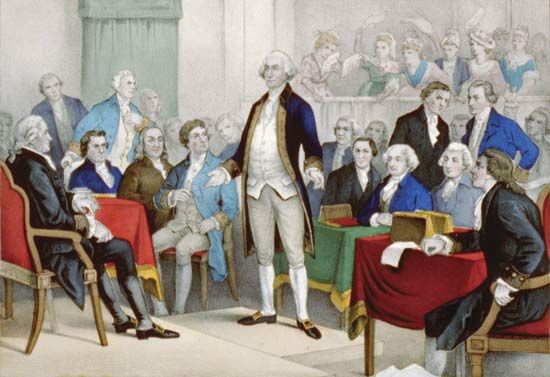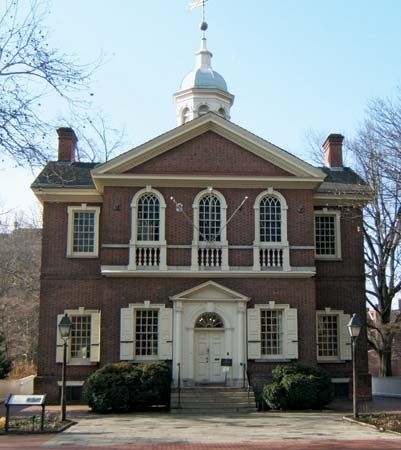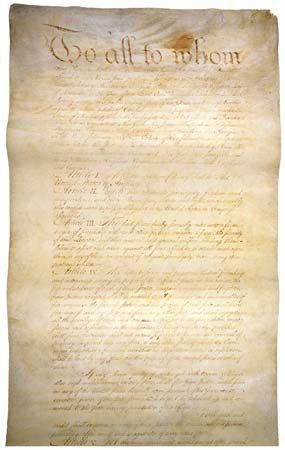
 The Continental Congress was the first government of the United States. When the congress adopted the Declaration of Independence on July 4, 1776, it brought the United States into existence. It then served as the country’s government until the U.S. Constitution went into effect in 1789.
The Continental Congress was the first government of the United States. When the congress adopted the Declaration of Independence on July 4, 1776, it brought the United States into existence. It then served as the country’s government until the U.S. Constitution went into effect in 1789.
In the early 1770s citizens of the 13 British colonies in North America were starting to rebel against Great Britain. A network of patriots, known as the Committees of Correspondence, called together the First Continental Congress to plan future action.
 The First Continental Congress met in secret in Philadelphia, Pennsylvania, on September 5, 1774. All colonies except Georgia sent delegates, or representatives. George Washington, Patrick Henry, John Adams, and Samuel Adams were among them. Each colony had one vote.
The First Continental Congress met in secret in Philadelphia, Pennsylvania, on September 5, 1774. All colonies except Georgia sent delegates, or representatives. George Washington, Patrick Henry, John Adams, and Samuel Adams were among them. Each colony had one vote.
The delegates decided not to call for independence from Britain. Instead they demanded such rights as life, liberty, property, public assembly, and trial by jury. They protested having to pay British taxes without being represented in Parliament (the part of the British government that made laws). The congress also called for the colonies to boycott, or refuse to buy, British goods.
The American Revolution had already begun when the Second Continental Congress opened in Philadelphia on May 10, 1775. Delegates from all 13 colonies attended the congress. New delegates included Benjamin Franklin and Thomas Jefferson.
The congress took control of the colonies’ new Continental Army. It put Washington in command of the army. The congress also issued and borrowed money and set up a postal service and a navy.
 At first the congress still said that the colonists were fighting for their rights as British citizens. On July 2, 1776, however, the congress stated that the colonies should be independent states. The congress declared independence from Britain two days later.
At first the congress still said that the colonists were fighting for their rights as British citizens. On July 2, 1776, however, the congress stated that the colonies should be independent states. The congress declared independence from Britain two days later.
 The congress prepared the Articles of Confederation, which served as the first constitution of the new United States. The articles went into effect in 1781. After that, the Continental Congress became known as the Confederation Congress.
The congress prepared the Articles of Confederation, which served as the first constitution of the new United States. The articles went into effect in 1781. After that, the Continental Congress became known as the Confederation Congress.
The Confederation Congress had little real control over the states. In 1789 the new U.S. Constitution set up the U.S. Congress. The U.S. Congress replaced the Confederation Congress.




